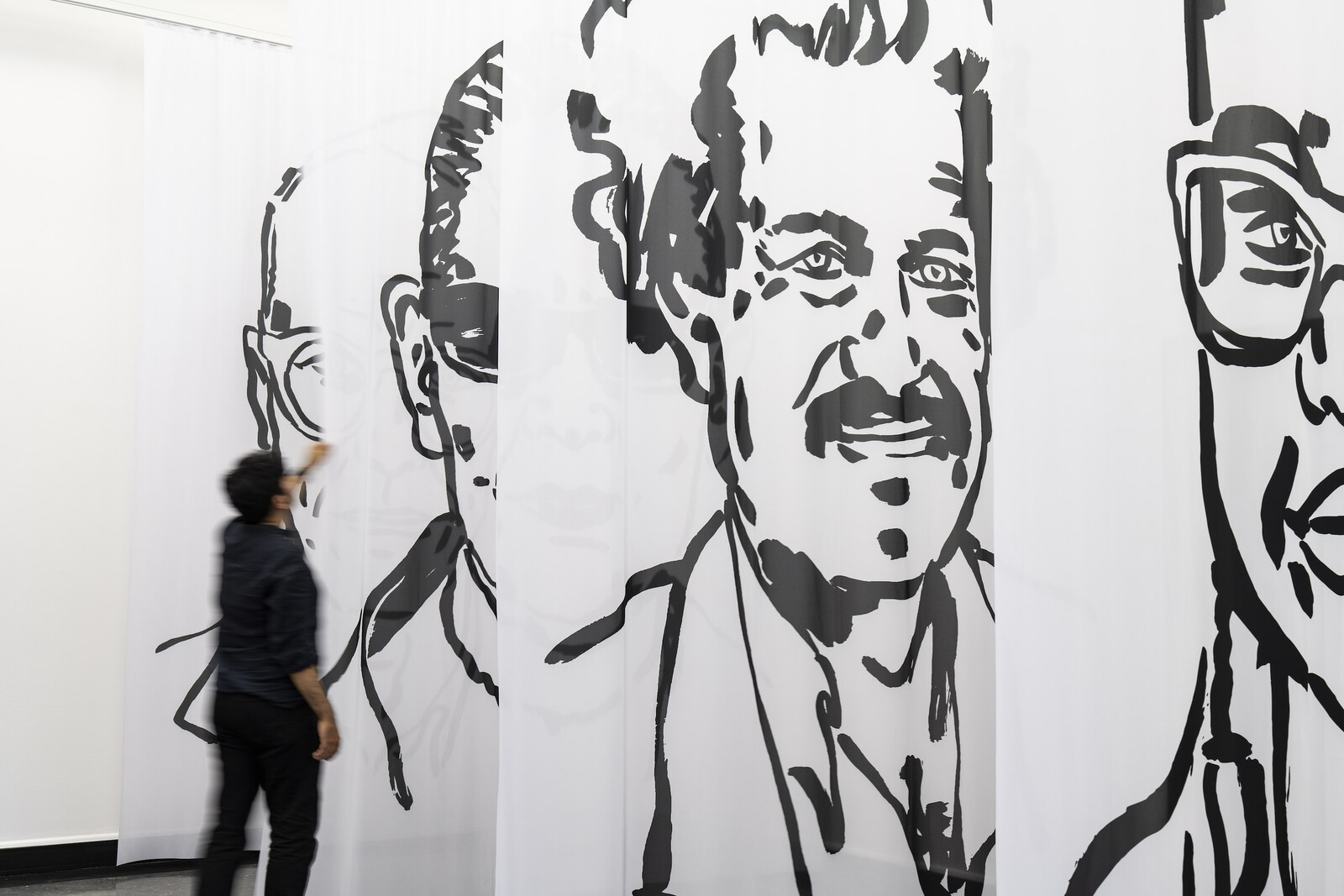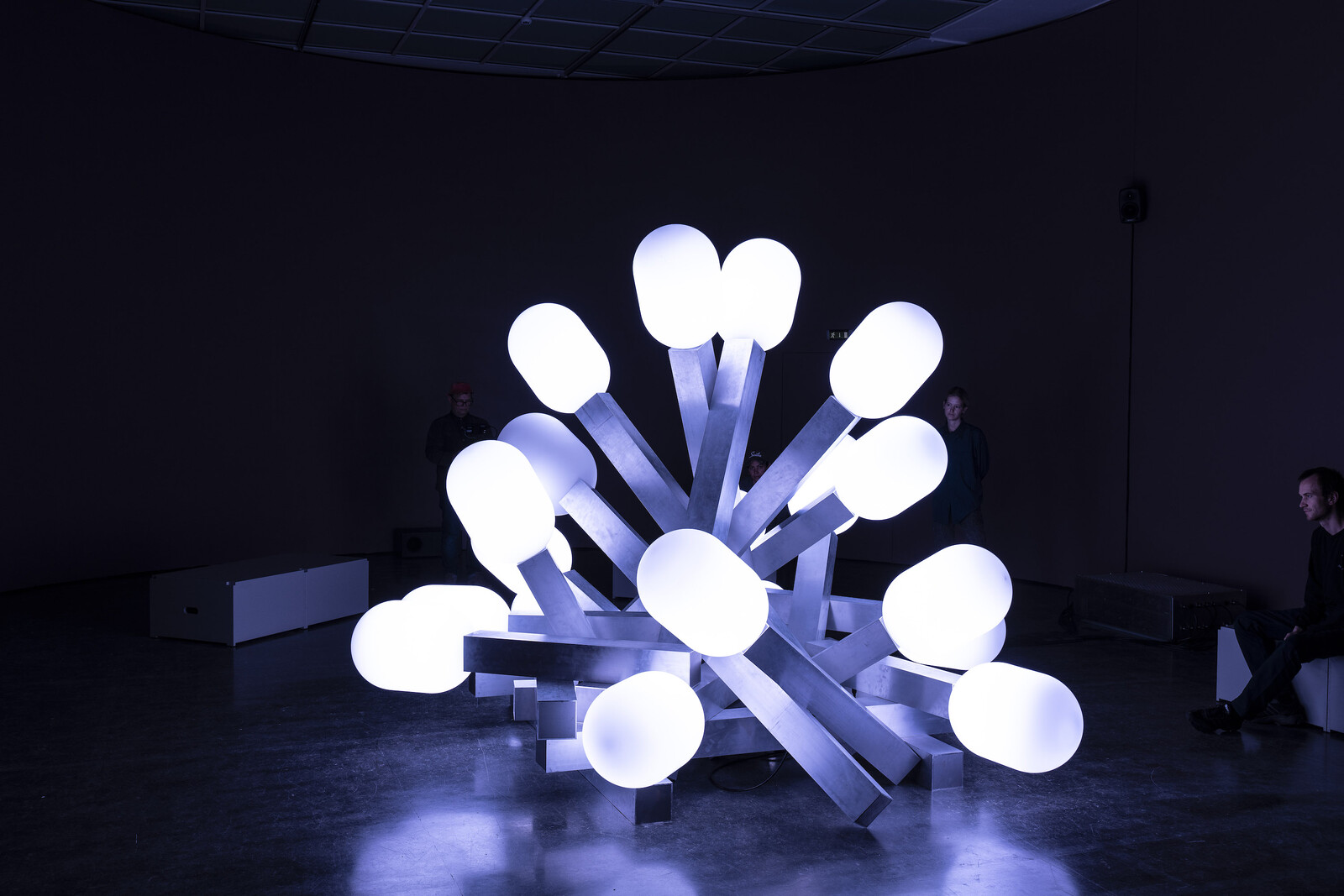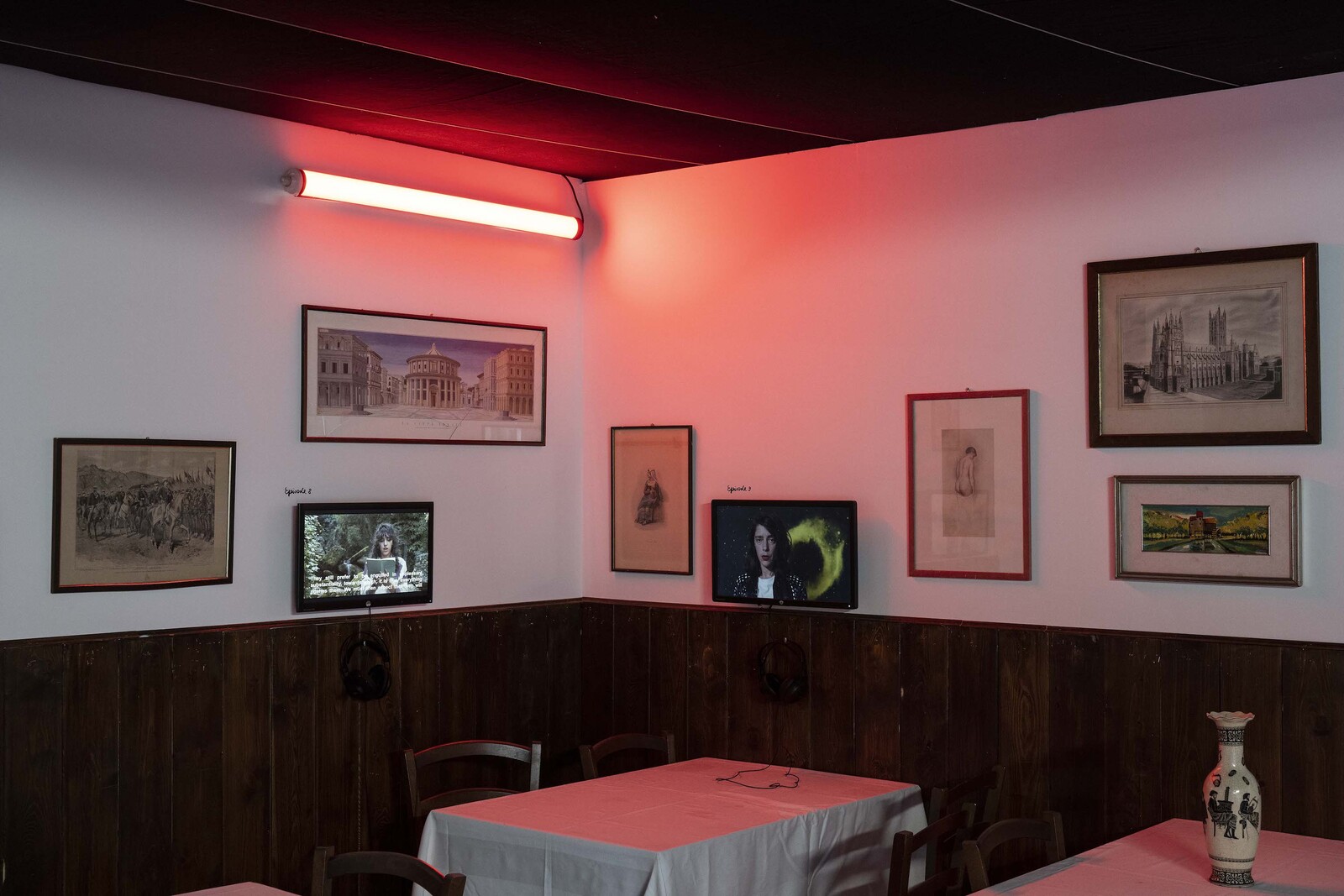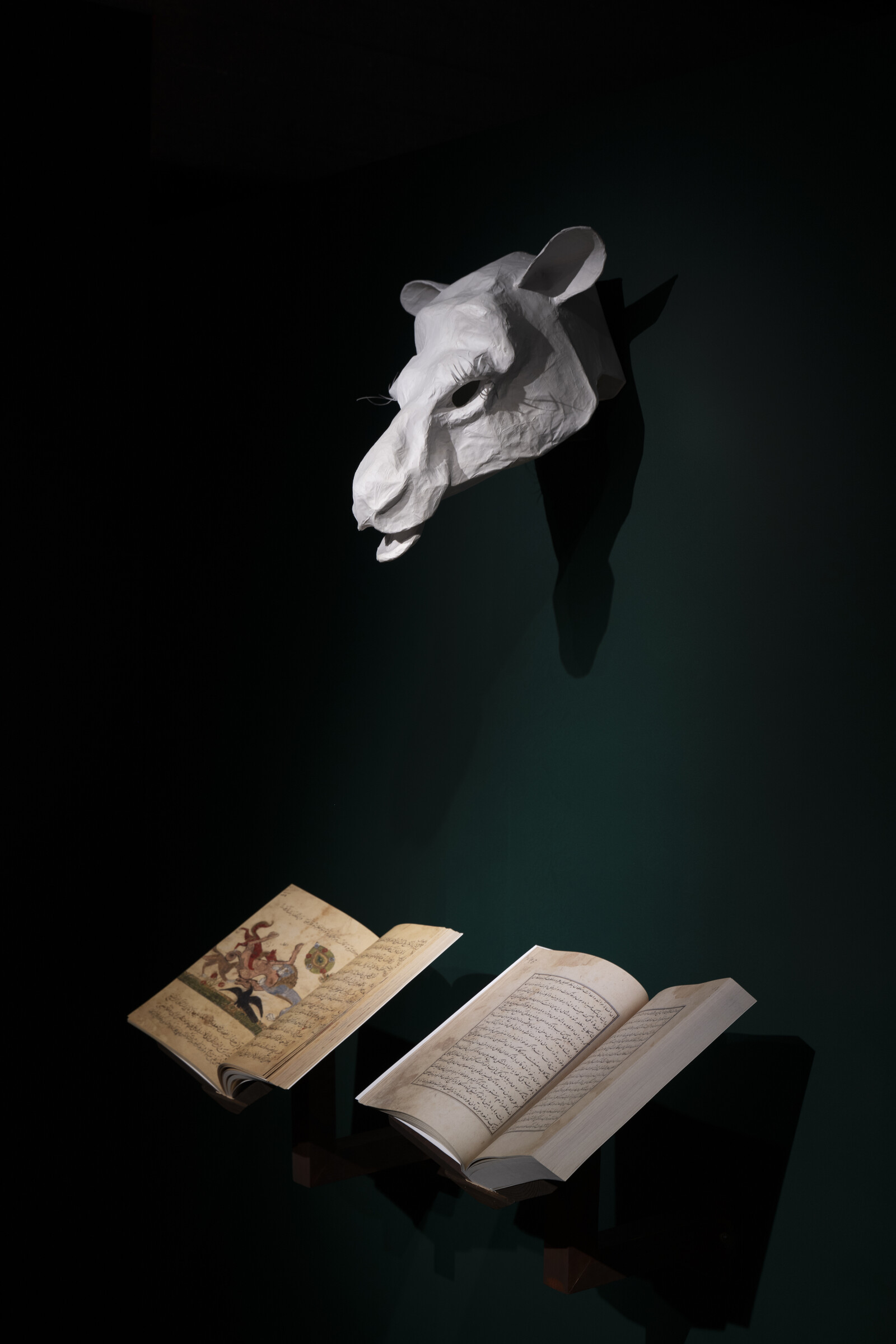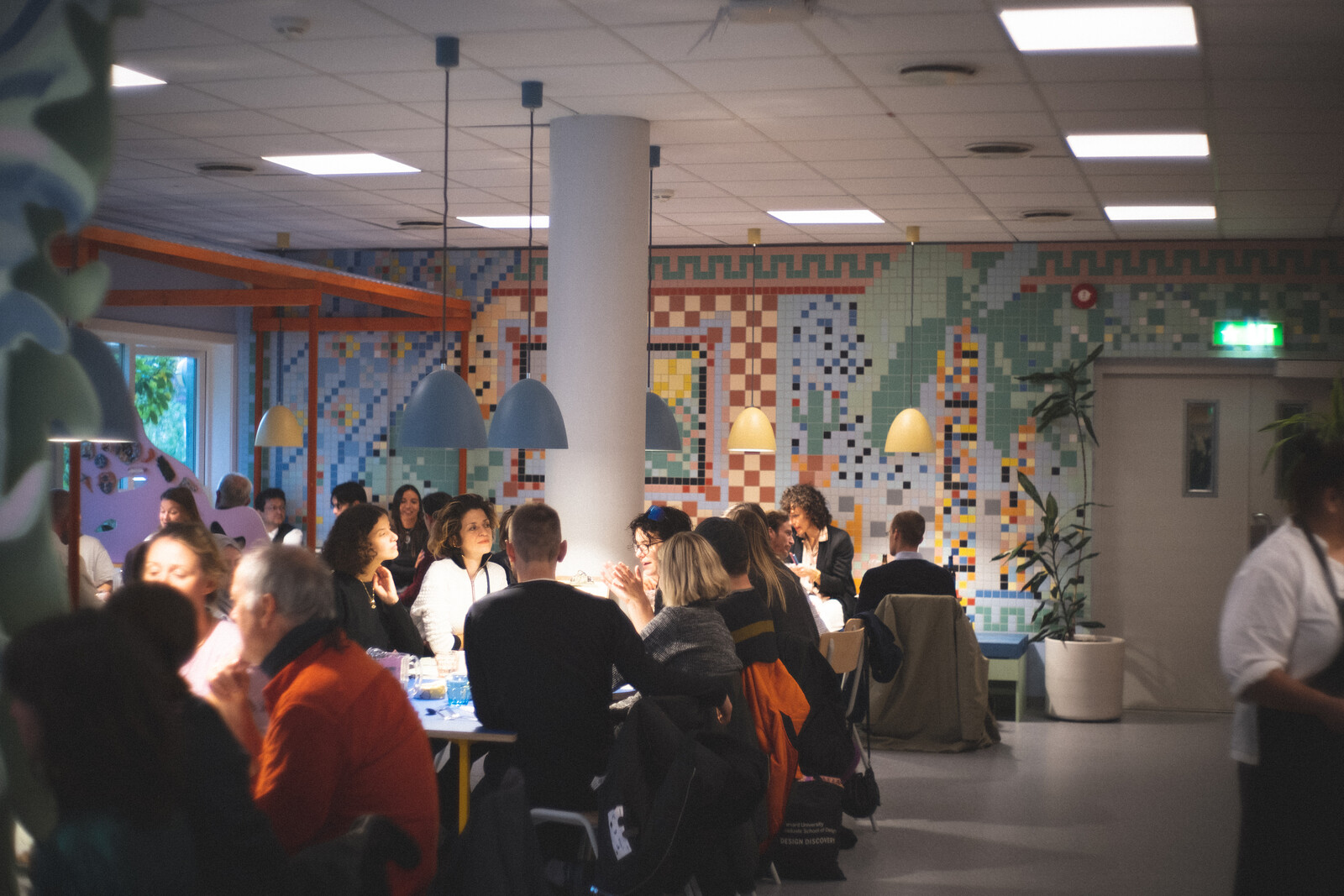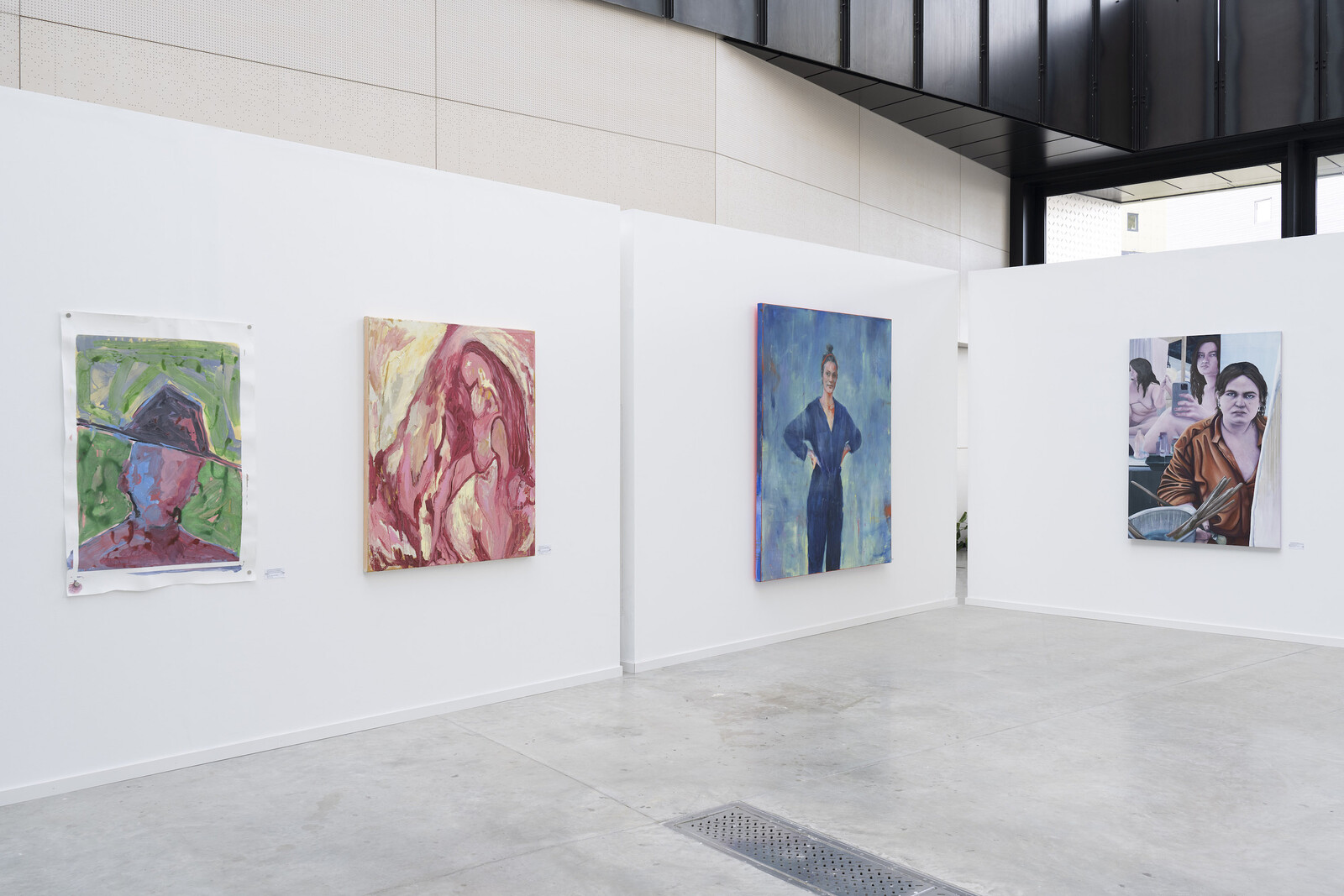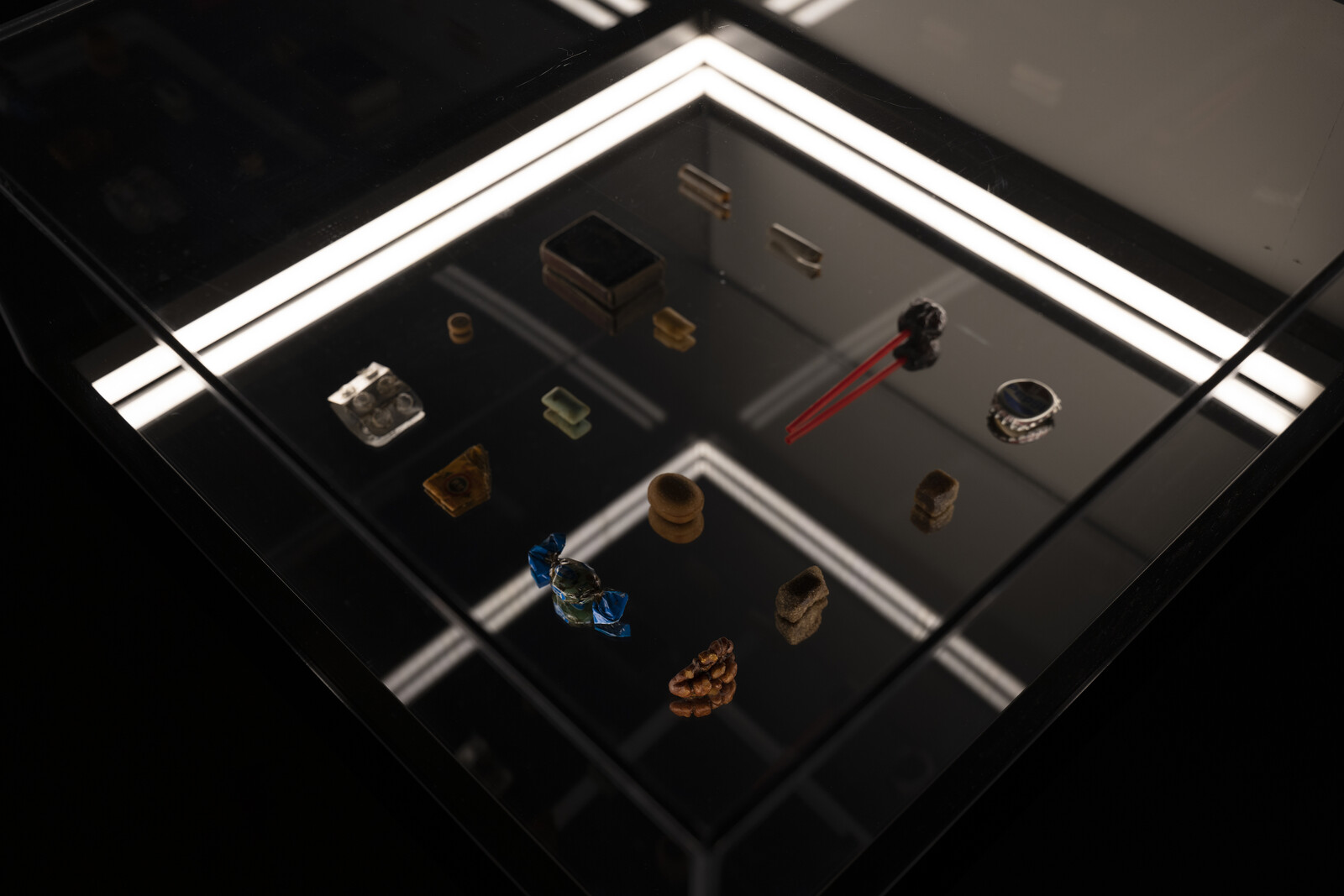September 8–November 6, 2022
As the dust begins to settle on this summer’s tumultuous large-format exhibition season, Bergen Assembly—“convened” by French artist Saâdane Afif—presents another opportunity to assess what happens when perennial shows are led by an artist, not a curator. This year’s Assembly, a Triennial now in its 4th edition, takes an unusually literary turn, in contrast to Kader Attia’s thesis-driven Berlin Biennale or ruangrupa’s Documenta, with its move toward decentralized leadership. Entitled “Yasmine and the Seven Faces of the Heptahedron,” the Assembly is organized around a loose frame story. This whimsical attempt to band together the show—featuring work by roughly eighteen participating artists and collaboratives—asks visitors to walk in the shoes of a fictional character, Yasmine d’O, in order to set the exhibition’s plodding scenario in motion.
Afif developed the character of Yasmine for the 2014 Marrakech Biennale; later, he expanded the project into a play, made in collaboration with Thomas Clerc. In Bergen, Yasmine is on a quest to gather and assemble the titular Heptahedron, a seven-sided object of desire. If the mythical polyhedron serves as a Hitchcockian MacGuffin to push the story forward, other contrivances follow in its wake: each of the Assembly’s seven venues is connected to even more fictive characters—the “Professor,” “Moped rider,” “Coalman,” “Tourist,” “Bonimenteur,” “Fortuneteller,” and “Acrobat”—that Yasmine encounters on her alleged journey.
If this all sounds rather confusing, you’re not alone. To make matters worse, the central gallery of the Bergen Kunsthall features large banners depicting caricatures of artworld celebrities, such as Hans Ulrich Obrist, Joseph Beuys, and a rendering of Jeff Koons looking uncannily like Barack Obama. These black-and-white cartoons, by the Berlin designers Neue Gestaltung, put a face on each of the seven aforementioned lead characters, alongside Yasmine. Playful as this may seem, the obtuseness of these meta-references—an immature curator, Yasmine may have sought help from these characters—give off the vibe of an insider joke. Or not. Humor can be a mask for anger or a tool for ridicule; it can also be a way to reframe the ordinary. So, what exactly might be the grand ruse of all of these literary games? What’s the purpose of Yasmine’s Heptameron? Is there more to it than a curatorial conceit which, on the surface, feels rather heavy-handed?
Like the many-sided object at the core of the exhibition, each fictive personality can fade out of importance, if you let them. Indeed, in many ways these characters provide an incidental background from which the themes and flavors of each exhibitor spring. Yet the more pressing question may be how this show’s actual curators have handled the art in the city itself. Venues are host to two, sometimes three, exhibits; a few present a standalone work. As such, Afif does something that seems more likely to have come from an artist than a curator: he allows the work ample room to breathe, so that both the artwork and the viewer can be pressed into focus. Whenever artworks are paired, the relations feel tighter than a typical bi- or triennial, in which conceptual gymnastics—not to mention jargon—are often deemed necessary to tie the batches of artworks together (and roughly, at best).
For instance, the identity of “the Professor” inhabits a gallery in Bergen’s recently constructed starchitect university, in which artists are not allowed to stain the floor. The three works shown here tussle with the power dynamics of institutionalized art education. Among them is an immersive film installation by “Gruppo Petrolio,” a collaboration instigated by official Triennial artist Lili Reynaud-Dewar with artists Jonas Björne, Sebastian Holmlund, Elna Karlsson, Livi Meltaus, and Tomofumi Yamasaki (all current students at the university). Housed in an ambiently lit stage set that transports visitors to a threadbare Roman trattoria awash in red neon light, the work vibrantly revisits the life, ideas, and assignation of Italian filmmaker Pier Paolo Pasolini through an ongoing, marathon-length film project.
Featuring an almost countless number of vignettes, the film primarily grapples with art’s relation to activism, and links Pasolini’s critique of the student-led protests of ’68 (as simply an intergenerational bourgeois civil war) with the heated cultural debates running throughout the privileged halls of today’s academies. The other two works at this site include that of the university’s own professor Lars Korff Lofthus—whose similar project, made with his students, revolves around painted portraits and the idea of “authorship” within a studio setting—and a small presentation of George Grosz facsimiles on the subject of the pedagogue and indoctrination. In contrast to the frame story, this gallery and its associations are crystal-clear, and refreshingly so. That being said, graffiti by students in both Norwegian and English was later painted on the gallery walls to protest how the Triennial effectively appropriated a student workspace, thus shifting the frame to ask: who gets to tell the story to whom, and to what end?
Elsewhere in Bergen, the exhibition hits the activist register once again—and through an empowering form of real change. Artist Sol Calero’s newly opened La Cantina de la Touriste offered guests a delicious three-star, three-course fixed-price dinner; proceeds from which help to subsidize this high-spirited, tropically themed, and permanent renovation of a nondescript cafe situated in the courtyard of an elderly nursing home. As well as investing in the community in which the work is situated, the restaurant features a rotating slate of local star chefs who provide on-the-job training to immigrants who have recently arrived in Norway. Alongside offering qualifications, La Cantina nurtures their talents by inviting them to co-develop a menu that features meals from each cook’s culinary tradition. This far more rigorous, not to mention humane, narrative shines above the Triennial’s meta-stunts. It is easily best in show.
It’s tempting to think of this year’s Assembly less as a curated exhibition than a work of art. Doing so, however, opens the show to other kinds of criticism: Why is an invisible female character the central proxy? In reality, the Triennial’s frame story was likely just a useful gimmick with which to generate a surprisingly cogent and compelling set of mini-exhibitions that, in the event, feel stunted, weighed down by the conceptual baggage that inspired them in the first place. Whether or not this really matters is an open question. Few people look back at a ladder after climbing it. Perhaps the best way to truly see and enjoy a work of art is to transcend the propositions of the curator, or critic, who frames it—what other position would you expect from an artist, after all?

